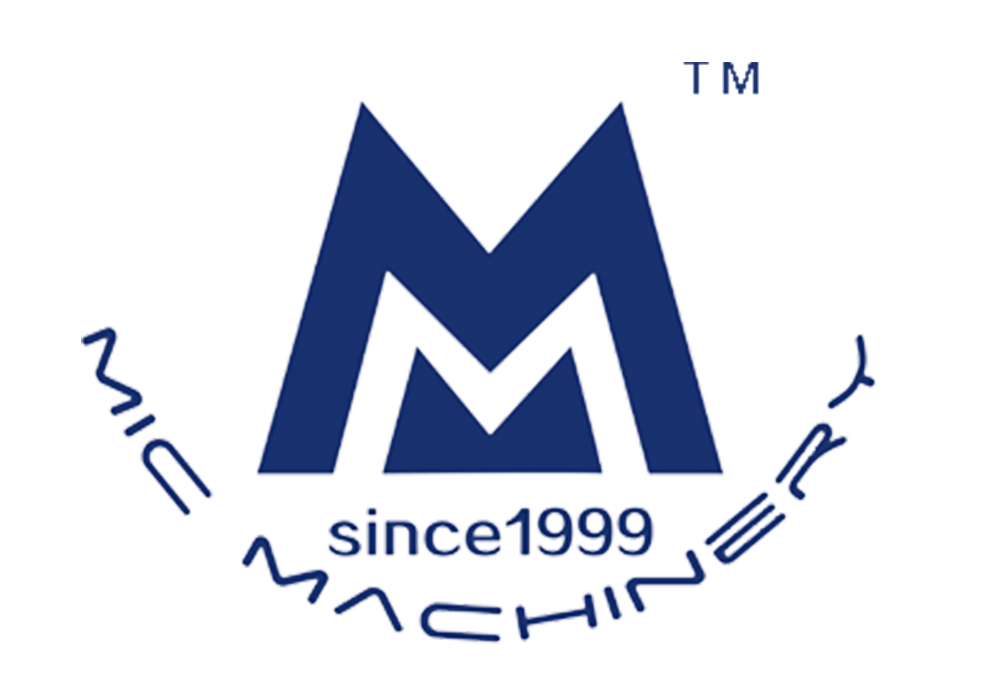Aseptic Filling Technology For Syringe Filling Machine
In the field of medicine, especially in the production of sterile drugs such as injections, vaccines, and biologics, sterile filling technology is the lifeline to ensure the safety and effectiveness of drugs. As an important drug delivery carrier, the absolute sterility of the filling process of syringes is crucial. This blog will focus on syringe filling machine, delving into their sterile design, key sterilization processes, and strict cleanroom environmental standards that comply with GMP (Good Manufacturing Practice) requirements.
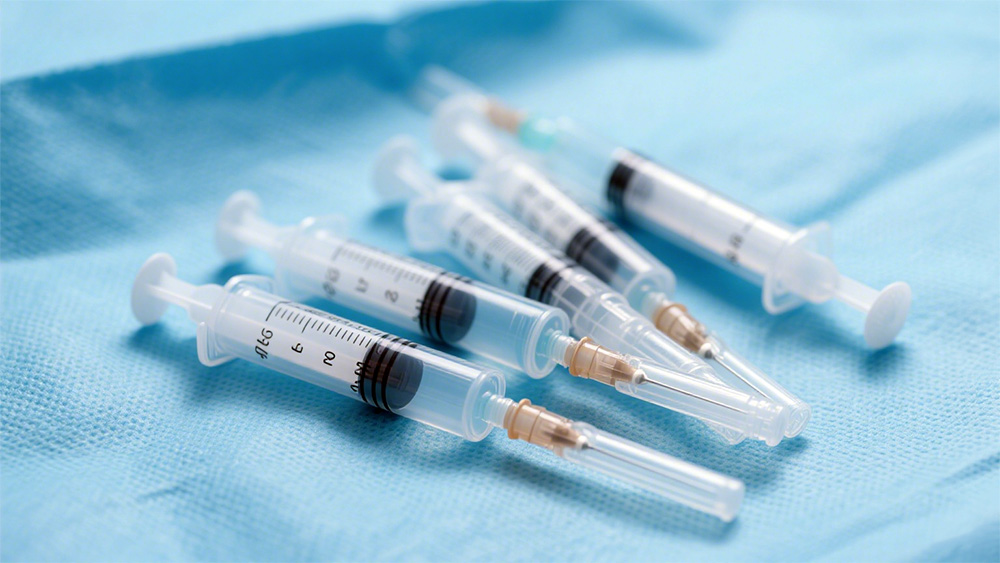
Core requirements for GMP grade aseptic design
The design of syringe filling machine must be centered on meeting GMP sterile production requirements:
1. Material selection and surface treatment:
All components in contact with the product, such as filling needles, tubing, pistons, and filling chambers, must be made of 316L or higher grade stainless steel, or other certified non-toxic, non shedding, corrosion-resistant, easy to clean and sterilize materials.
The surface needs to be polished with high smoothness (usually Ra ≤ 0.8 μ m) to minimize the risk of microbial hiding and residue adhesion, facilitating thorough cleaning and sterilization.
2. Sealing and isolation technology:
Modern GMP grade syringe filling machine commonly use isolators or restricted access barrier systems (RABS). These systems completely isolate operators, external environment, and sterile core operating areas through physical barriers.

The system maintains positive pressure internally and continuously supplies unidirectional sterile air (laminar flow) through high-efficiency air filters (HEPA/ULPA) to ensure a Grade A environment.
3. Online Cleaning (CIP) and Online Sterilization (SIP):
CIP system: The equipment design needs to integrate an automated CIP circuit, using validated cleaning agents and programs that can effectively remove product residues, microorganisms, and the cleaning agent itself, leaving no dead corners.
SIP system: The device must be able to withstand and execute effective online sterilization procedures (usually using saturated pure steam sterilization). All sterile core areas (including pipelines, valves, filling heads, and interior chambers) should have steam pathways to ensure that the sterilizing agent (steam) can reach and maintain an effective temperature and time (such as 121 ° C, 30 minutes) uniformly. The system needs to be equipped with temperature and pressure sensors for monitoring and verification.
4. Verifiability and Automation:
The equipment design should facilitate installation confirmation (IQ), operational confirmation (OQ), and performance confirmation (PQ), especially for sterile assurance related validations (such as sterilization program validation, support for culture medium filling tests).
Highly automated operations (such as automatic loading, filling, plugging, and unloading) and closed conveying systems minimize the risk of contamination caused by manual intervention.
Key sterilization process: UV radiation and multiple safeguards
Sterilization is the core means to ensure the "sterile state" of sterile filling equipment and environment:
1. Application of Ultraviolet Sterilization (UV-C):
Scope of application: UV-C (wavelength 253.7nm) is mainly used for surface disinfection and environmental air/surface maintenance disinfection in syringe filling equipment.
Specific application scenarios:
·Internal of isolator/RABS: Prior to equipment operation or during batch conversion, the stationary surfaces inside the isolator (such as conveyor belts, inner walls) are irradiated as a supplement or alternative to chemical gas sterilization (such as VHP) or steam sterilization (effectiveness needs to be verified).
·Above the filling area: Install UV lamps under Grade A laminar flow to disinfect the continuously flowing air and reduce the microbial load in the air.
Key component entrance (caution required): Sometimes used for rapid disinfection of small tools or component surfaces entering the sterile core area (penetration and dosage need to be verified).
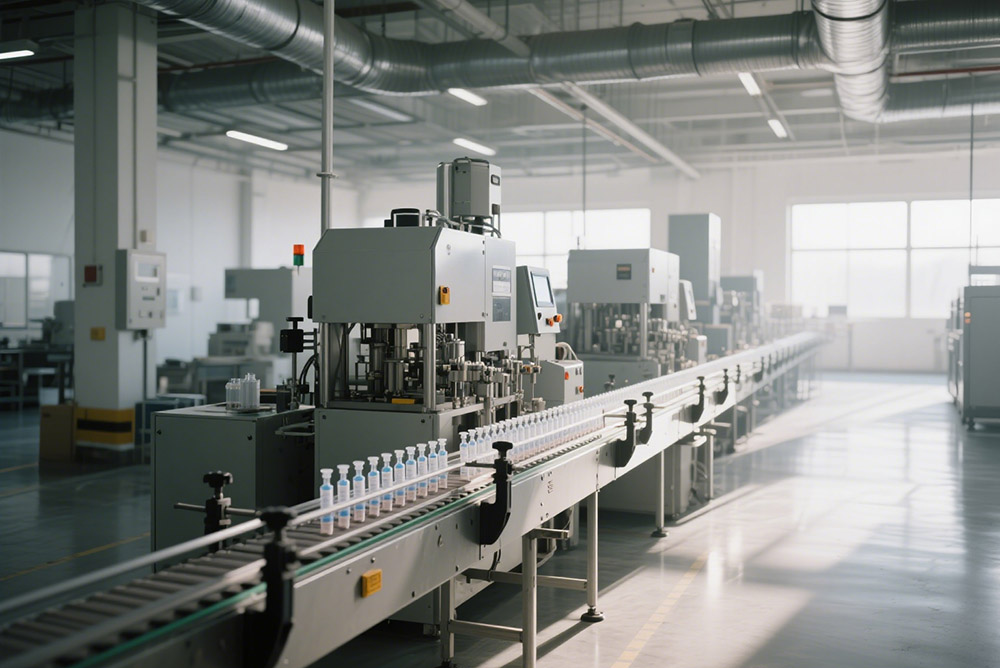
Advantages and limitations:
·Advantages: relatively simple operation, no chemical residue, and continuous use.
·Limitations: Weak penetration ability (can only kill surface microorganisms exposed to radiation), the killing effect on microorganisms is greatly affected by radiation intensity, time, distance, and surface shadows, and cannot replace deep sterilization such as SIP inside the equipment or VHP inside the isolator. Its effectiveness needs to be verified and confirmed.
·Key verification points: UV lamp intensity (requiring regular monitoring and calibration), irradiation time, coverage area, microbial challenge test (such as using Bacillus subtilis var. niger spores).
2. Other core sterilization processes:
Saturated Pure Steam Sterilization (SIP): As mentioned earlier, it is the gold standard for sterilization of sterile core contact components, achieving reliable spore killing through high-temperature and high-pressure saturated steam.
Vaporized hydrogen peroxide sterilization (VHP): widely used for sterilization of the internal environment and surface of isolators. VHP gas has good diffusion, reliable sterilization effect, and no residue (mainly water and oxygen) after decomposition.
Dry heat sterilization: suitable for components that are resistant to high temperatures but not to humidity and heat (such as certain metal tools), or for removing heat sources (such as glass components).
Filtration and sterilization: Gas (compressed air, nitrogen) entering the sterile area and filling the medicine must be filtered using a 0.22 μ m (or smaller pore size) sterilization grade filter.
Strict cleanroom environmental standards
Aseptic filling operations must be carried out in a strictly controlled environment:
1. Environmental classification (based on ISO 14644-1/EU GMP Annex 1):
Filling points and open container areas: required to meet Grade A (ISO 5) environmental standards. The number of suspended particles ≥ 0.5 μ m per cubic meter of air during operation shall not exceed 3520 (dynamic). This is the most critical area.
Background of aseptic preparation and filling area: It is required to meet Grade B (ISO 7) environmental standards. As the background support for Grade A area.
Clean corridors and preparation areas typically require a Grade C/D (ISO 8/ISO 9) environment.
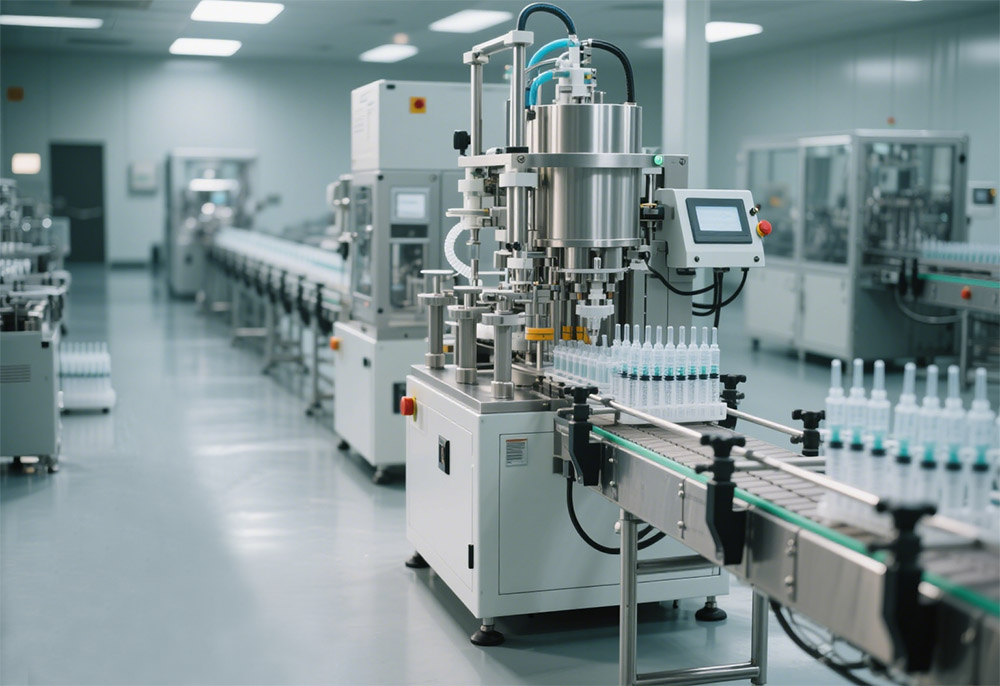
2. Key control elements:
High efficiency air filtration (HEPA/ULPA): Grade A area must use unidirectional flow (vertical or horizontal laminar flow) devices to provide uniform, stable, and sterile air covering the entire critical operating area. The wind speed usually needs to be maintained at 0.36-0.54 m/s (vertical) or 0.45 m/s (horizontal), and the uniformity of wind speed and airflow pattern should be tested regularly (smoke test).
Pressure gradient: An appropriate pressure gradient (usually ≥ 10-15 Pa) must be maintained between clean and non clean areas, as well as between areas of different cleanliness levels, to ensure that airflow flows from high cleanliness areas to low cleanliness areas.
Temperature and humidity control: maintain appropriate operator comfort and prevent microbial growth (usually temperature 18-24 ° C, relative humidity 45% -65%, depending on the product and process).
Strict changing procedures and personnel behavior norms: Personnel entering the sterile core area (Grade A/B) must undergo rigorous training and change certification, wear sterile clothing (RABS/isolator operations are usually carried out through glove sleeves), and minimize the emission of particles and microorganisms by personnel.
Environmental Monitoring (EM): Continuously and dynamically monitor key parameters such as suspended particles, microorganisms (settling bacteria, planktonic bacteria, surface microorganisms, personnel glove fingerprints), pressure difference, temperature and humidity to ensure that the environment is always in a controlled state. Data needs to be regularly reviewed and trend analyzed.
Practical case: GMP grade syringe filling solution
Taking the syringe filling machine provided by Mic Machinery as an example, its design fully embodies the above GMP aseptic requirements:
Core sterile area design: Advanced isolator technology or cRABS (closed restricted access barrier system) is used to place key processes such as filling and plugging in a sealed Grade A environment.
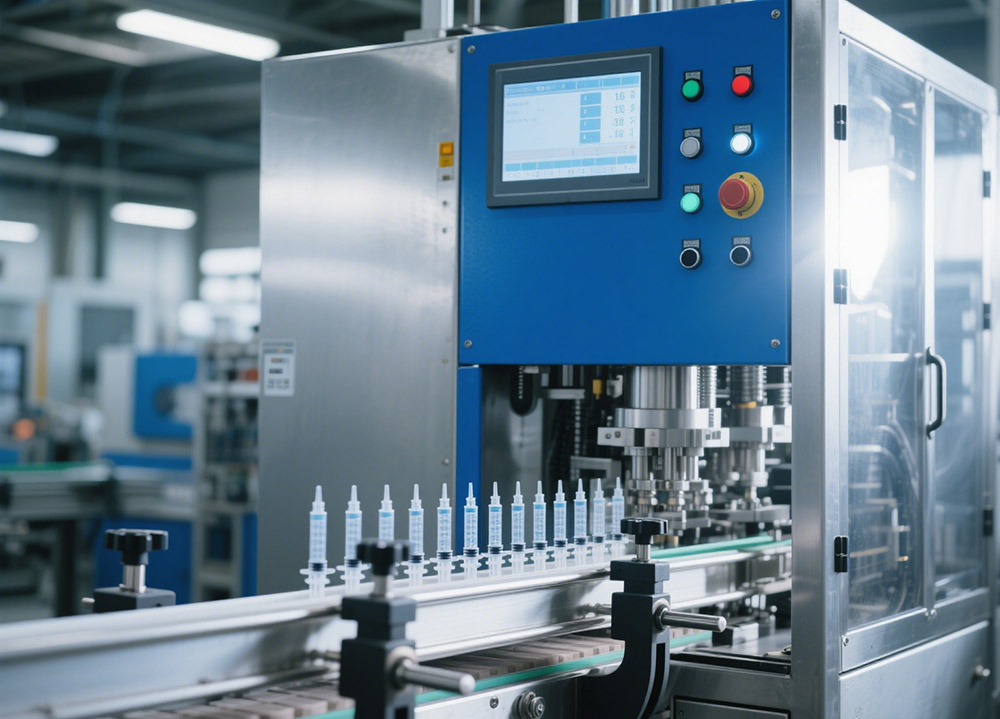
Online Sterilization (SIP): The equipment integrates a complete pure steam SIP system, which can perform 121 ° C saturated steam sterilization on the pipelines, filling pumps, needles, etc. in contact with the product, and is equipped with automatic recording and verification interfaces.
Online Cleaning (CIP): Designed with an automated CIP station to ensure thorough and efficient internal cleaning of the equipment.
Material and Surface: The contact parts are made of 316L stainless steel and undergo high-grade electrochemical polishing.
Environmental control integration: The equipment design seamlessly integrates with the clean room laminar flow system to ensure that the filling point is under stable Grade A unidirectional flow protection.
Automation and sealing: highly automated operation, reducing manual intervention; Use a closed transmission system to transfer the syringe barrel and rubber stopper.
Verifiability: The equipment design meets GMP validation requirements, facilitating IQ/OQ/PQ and sterile process validation (such as culture medium filling tests).
The application of aseptic filling technology in the pharmaceutical field, especially in the production of injections, is a precise combination of science and engineering, regulations and practice. As the core equipment of aseptic production, the syringe filling machine conforms to the sterile design concept of GMP, multiple effective sterilization process guarantees (including the application of ultraviolet radiation in specific scenarios), and strict implementation of clean room environmental standards, which together constitute a solid defense line to ensure the sterility of the final drug.
